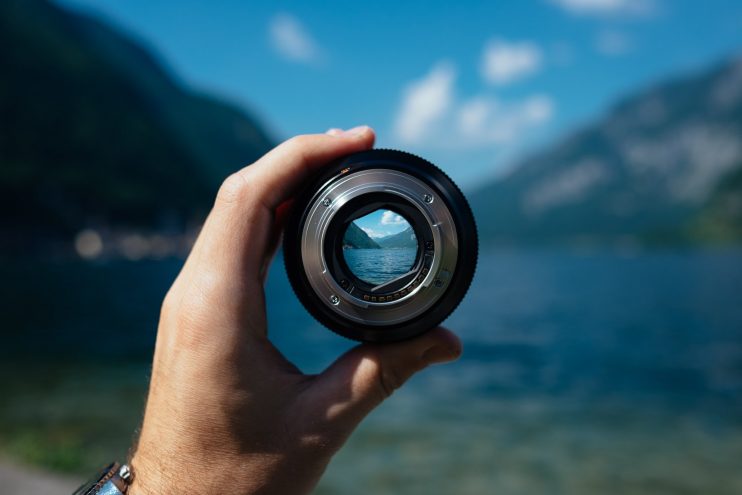Digital Transformation Definition
Digital transformation has been a big topic for a few years now, and it has many definitions.
From a business perspective, digital transformation is about leveraging digital technologies to improve processes, competencies, and business models. It is also about changing the culture of the company because it requires letting go of old procedures that might be ingrained in the company culture.
Each digital transformation will look different as its primary goals will differ. But in the end, digital transformation plays “a critical role in a businesses’ ability to evolve with the market and continually increase value to customers”. Digital transformation is no longer about gaining a competitive advantage – it’s about evolving in order to stay in the market.
It seems this message has been taken seriously by many companies. IDC estimates that companies worldwide will spend around $1.7 trillion on digital transformations, which is a 42% increase from 2017.
Why Businesses Transform
Today we see that digital transformations are driven by several different trends. Many of the digital transformations are customer-centric, focusing on customer engagement and customer experience while also reducing costs. A survey from Constellation Research shows that 41% of respondents want “to reach and engage with customers more efficiently”.
Businesses are not using technologies to deliver a more seamless experience to customers, both in the real and virtual world. Amazon Go stores is an excellent example of how technology is implemented in real life to eliminate the most annoying part of shopping – the check out line. Another example of such implementation is healthcare.
A company called Dignity Health is using various types of technologies to shorten the time before a patient meets with a doctor. They offer an app to schedule appointments, receive prescriptions, suggest the best parking spot on arrival, and even describe the best route to get to the appointment inside the hospital.
Such solutions save money by removing the necessity to staff receptions, and it gives patients a sense of control and a feel of personalization of their healthcare journey. But such solutions are not possible without good insights about the customer.
Big Data is here to stay, and companies are using machine learning to make predictions and calculations that were not possible before. Companies are also using data capturing technologies to sort through their unstructured data (documents, social media feeds, digital pictures and videos, audio transmissions, sensors etc.) and bring to light any insights it might hold.
Why AI is at the Forefront of Digital Transformations
Many companies are turning to AI for help to make their digital transformations a reality. You can find AI pretty much everywhere you turn – from your iPhone to your Tesla – and it’s evolving fast.
AI, and machine learning systems in particular, are becoming exponentially smarter. For example, just in two years speech recognition error rate almost halved (from 8.5% in 2015 to 4.9% in 2017). Compared to 2013, when the error rate was at 23%, this development is pretty impressive.
The two most significant advancement areas in AI that many companies are utilizing are perception and recognition.
Speech and voice recognition has become a normal part of our everyday lives. Products like Siri, Alexa, and Google Assistant are there for us through the day to relieve us of the burden of typing, which might be a big time savior for us. Studies show that speech recognition algorithms produce results 3 times faster compared to typing it out on the phone.
Advantages in image recognition were applied to many different industries. From Facebook suggesting to tag your friends in pictures to Tesla’s self-driving car, we are more and more in contact with machine learning systems that improve our lives.
The retail industry has been at the forefront of utilizing image recognition technology to enhance user experience. Many clothing retailers, with ASOS in the lead, are now enabling a way for customers to search using images, often without leaving other platforms. As a customer, you can now search for an outfit of your favourite influencer just by uploading one picture. Shop-the-look, as introduced by Pinterest last year, is another popular feature that inserts shopping opportunities into social media platforms, and delivers a more seamless shopping experience.
The list of AI applications could go on. After all, the amount of investment in AI and new AI startups have skyrocketed in the last 5 years. In 2018, however, we are seeing certain technologies being explored more than others.

Let’s have a look at a few of them and see why they are receiving extra attention this year.
AI Trends that Facilitate Digital tTransformations
AI and ML systems are now becoming superior at many tasks that were once done best by humans. That means that there is great potential to both use it to do things humans will never be capable of doing, but also outsource repetitive tasks to save time.
Deep Learning
Deep learning is the most popular subset of AI today, and it has many areas of application.
Firstly, it enables better utilization of data. The oil industry is taking advantage of AI supercomputers to deal with the sea of data, both prior and during drilling operations. Baker Hughes, a GE company, is the services of NVIDIA for seismic modeling, automated well planning, and visualization and analyze massive volumes of production and sensor data to predict equipment failure and its repercussion on the overall system.
Deep learning is also helping deliver better customer experiences, both on the front lines and behind the scenes. In addition to great use cases of computer vision and image recognition that we mentioned earlier, deep learning is helping companies provide better customer service, personalize customer journeys, or hire the right people to work for the company. Big companies like AT&T and Verizon are using deep learning algorithms to “anticipate behaviour changes and make customized offers based on the customer’s usage patterns.”
Automated Machine Learning (AutoML)
In its essence, AutoML is about automating the time-consuming processes of data science.
Data scientists have to work with things like algorithm selection, hyperparameter tuning, iterative modeling, and model assessment, which all processes that today are driven by high knowledge level of the model data, trial and error, and at times pure intuition. AutoML addresses this by offering building blocks to accelerate the model building process, which often is the most expensive and time-consuming.
AutoML opens doors for companies without a big budget for AI and data science. With AutoML, the can improve their processes, get better usage of their data, and ultimately deliver better value to their customers.
There are s few companies are working on AutoML solutions. Google launched their Cloud AutoML solution that allows people with no machine learning experience to build custom image recognition models. A company called Zylotech is developing an autoML platform for marketers to utilize the customer data better. A startup called DataRobot, is doing similar work without putting restrictions on what kind of data sets you can use.
Deep Reinforcement Learning
Deep reinforcement learning lies somewhere between supervised and unsupervised learning. The learning happens when a network is presented with simulations and no data about what the correct answer is. The only thing it has is an outlined reward, and it needs to explore in order to figure out how to get that reward. The ultimate goal is to maximize some long-term goal.
The network is essentially learning based on feedback and rewards it’s getting once the desired outcome has been achieved, which makes it good for applying to dynamic and adaptive environments. The most famous example of how successful deep reinforcement learning can be is Google’s DeepMind learning how to play Go better than any human being.
Real-life applications are still few but the areas where this technology might be adapted first are robotics and industrial automation. For example, Google’s DeepMind also has lowered energy consumption at Google’s own data centers by 15%. This is after experts have optimized it.
For the industrial use, we are seeing startups, such as Bonsai and Fanuc, working on adapting DRL to environments where several devices need to interact together and learn new tasks quickly. They are working to replace human workers in maintenance, supply chain optimization, automation of control systems for physical equipment.
AI and Digital Transformation go Together
By looking at the state of AI today, it is clear that is and will continue to be a big part of digital transformations. It helps companies automate and enhance many customer related tasks, and save money in the process.
Additionally, AI is well on the way to become the answer to Big Data problem. By using deep learning algorithms, companies are able to analyze their data better. There is no denying it, AI is simply better at seeing patterns and connections that humans can’t. It also speeds up the insights – many algorithms are able to deliver results in real-time.
AI technologies are also empowering people by relieving them of repetitive tasks and making machine learning services more accessible. Technologies such as autoML and deep reinforcement learning are removing the dependency on highly-skilled data scientists and complicated data sets.
With such rapid advancements in AI and its central role in digital transformations, we are bound to see a more creative application of this technology to achieve even better customer experiences and data use.
Let InData Labs Experts Power your Digital Transformation Strategy with Top-notch AI Technology
Schedule an intro call with our Machine Learning and AI software development engineers to explore your idea and find out if we can help.


